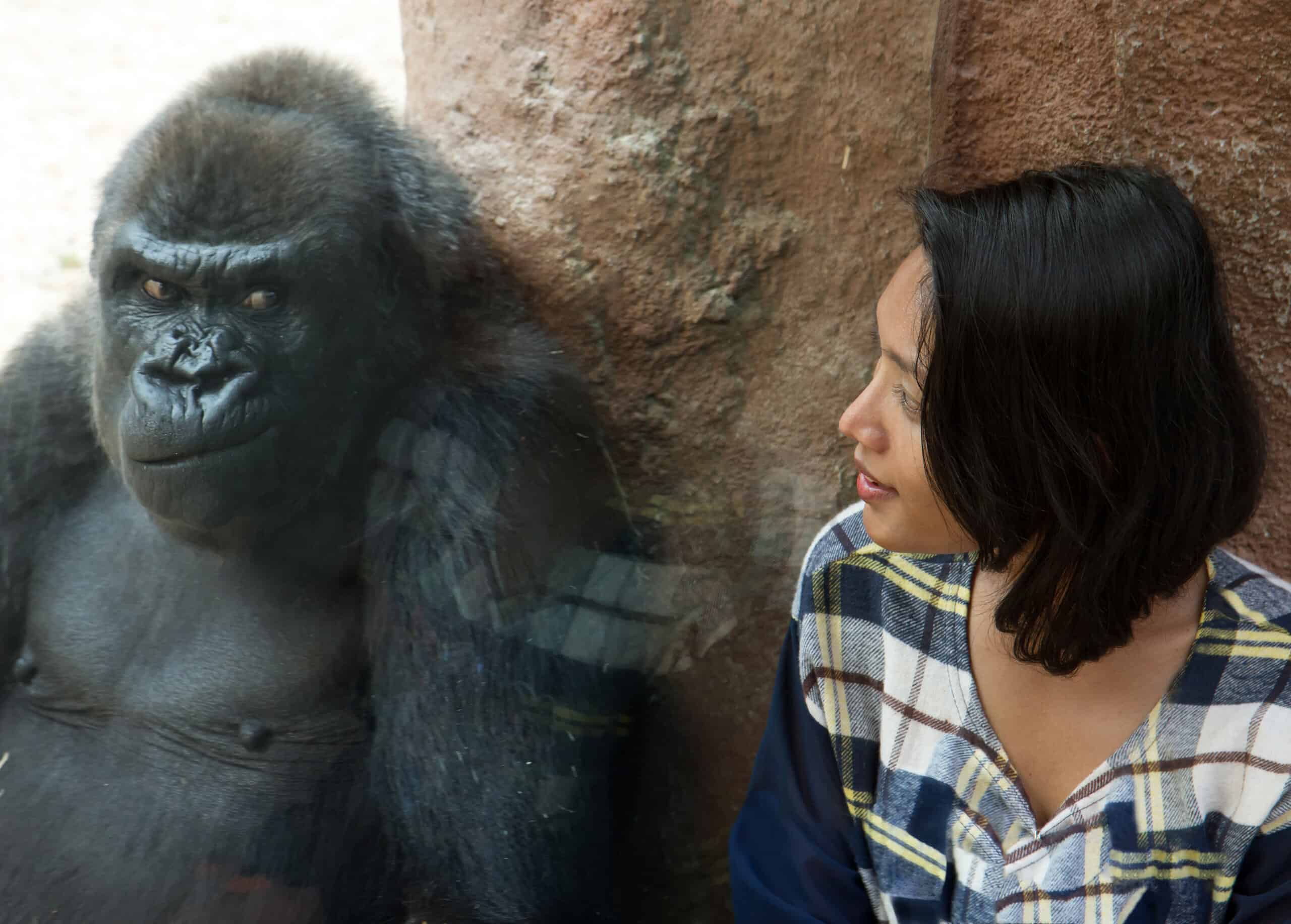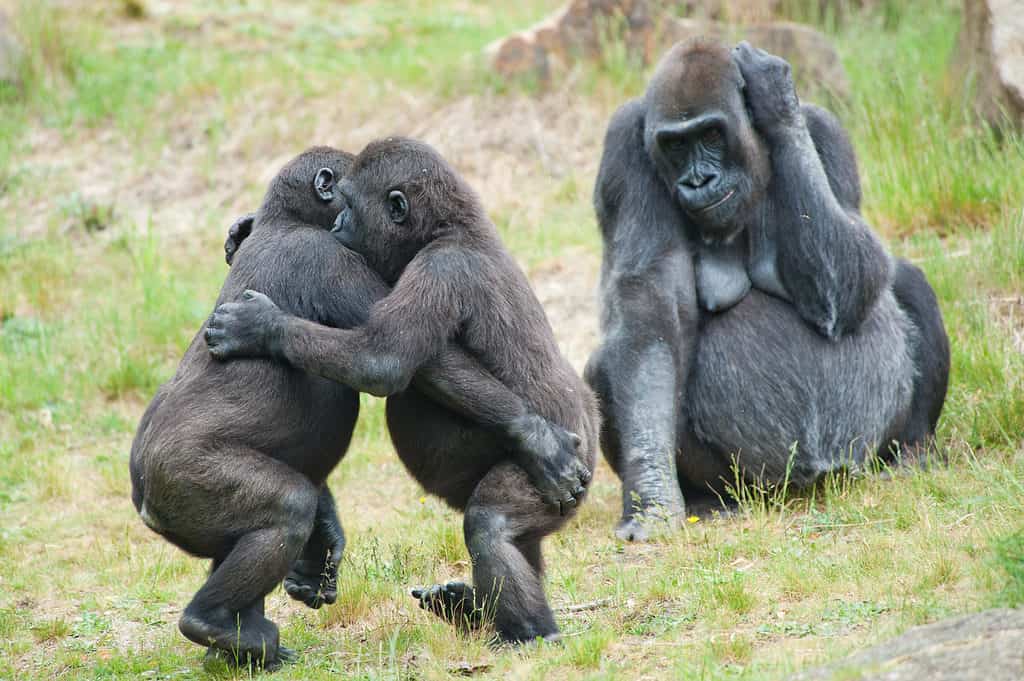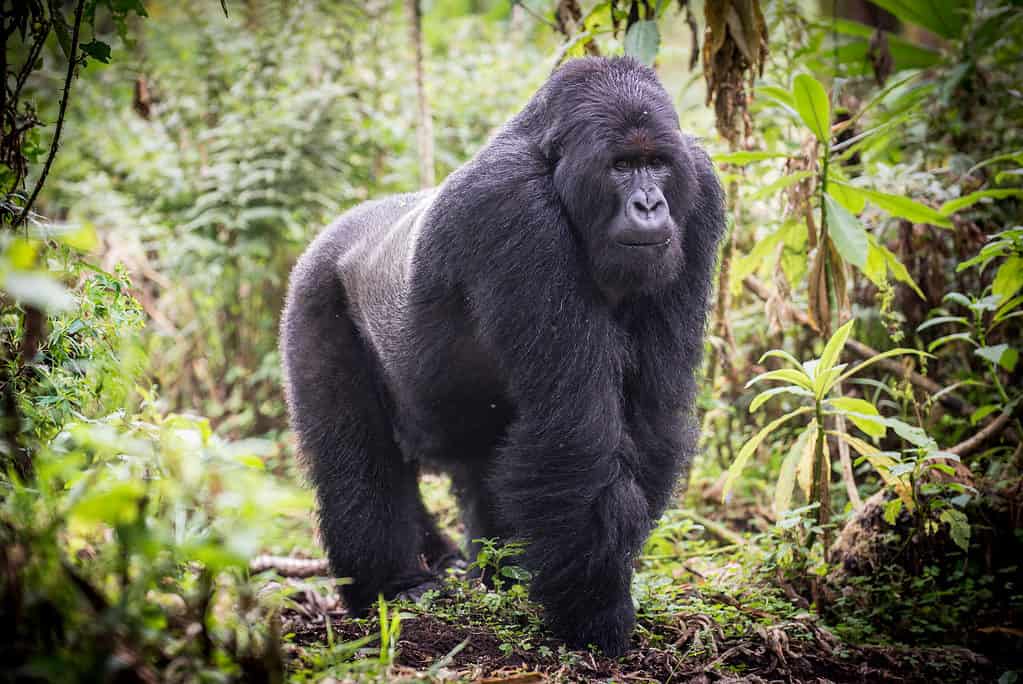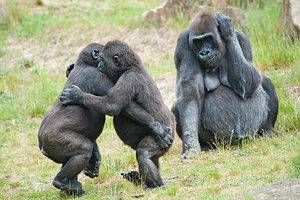Continue reading for our analysis...

Zoos give people a chance to see animals that they may never cross paths with in the wild. This video shows what happens when a zookeeper introduces a silverback to their newborn. The gorilla in this video is a large male mountain gorilla named Juba, who at the time was around 20 years old. Working at the Dallas Zoo in Texas, Mary Kate Findley has made a strong bond with the primates that she has been working with for 4 years. Juba lives with four other males, and he was very intrigued when seeing the zookeeper behind the glass.
This is not the first time that this zookeeper has brought one of her children to meet her work family. She also showed her daughter Olivia to the gorillas when she was 2 months old. Juba the gorilla was very intrigued when seeing his zookeeper, and what she had in her hands. At first, he did now know what to think, but the large silverback became very fascinated with the small newborn and continued to stare.
Gorillas and Humans
Humans and gorillas are very close relatives. Gorillas share around 98% of their DNA with us. Of all the animals in the world, they are our second closest relatives. Chimpanzees are humans’ closest relatives, and we share approximately 98.8% of the same DNA.

Gorillas live 10 years more or longer in captivity.
©Milkovasa/Shutterstock.com
Gorillas may look more animalistic than humans, but these large creatures are actually more gentle than they seem. They are able to show happiness, sadness, and even laughter. Studies have shown that gorillas are able to recognize the voices of humans they are familiar with. If a gorilla has a good relationship with a human they will associate their voice with positive memories.
While not as smart as other primates like chimpanzees, gorillas are extremely intelligent. They have the ability to learn sign language. Famous gorillas like Koko have been able to learn sign phrases with a length of over 8 signs, and use the correct grammatical structures.
Gorilla Family Structure
At a zoo, a gorilla’s family is the fellow great apes that they cohabitate with, and the zoo keepers that take care of them. Gorillas in the wild live in groups ranging from 5 to 10 members. They are very social animals, with their families capable of getting up to 50 members large. When in their natural habit, a gorilla may live between 35 to 40 years, but in captivity they can live up to 50 years.

Gorillas live in extended family groups
©Eric Gevaert/Shutterstock.com
Gorilla groups are called troops. One type of troop is that led by a dominant male, who leads several other gorilla females and their young, while another type is made up of several males which are called a bachelor group. Gorillas have a clear hierarchy in their families, and living in a society helps them survive in the wild.
Gorillas behavior towards humans is very shy and reserved, and they usually only attack if threatened. In zoos, and the wild, humans have managed to build close relationships with gorillas, and some have even made it into their families.
Gorilla Habitat
There are two main species of Gorillas, only native to equatorial Africa – the Western gorilla and the Eastern gorilla, and they are separated by 560 miles of Congo Basin forest. The western gorilla, which is divided into two sub-species of the western lowland gorilla and the cross river gorilla, is the most frequently seen, with a population of over 250,000. This primate can be found in the Democratic Republic of Congo, Cameroon, large areas of Gabon, the Central African Republic, and Equatorial Guinea.

Humans and gorillas share approximately 98% of their DNA.
©Jurgen Vogt/Shutterstock.com
The eastern gorilla is also divided into two sub-species – eastern lowland gorillas, also known as Grauer’s gorilla and mountain gorillas. This ape can be also found in the Democratic Republic of Congo in the lowland tropical rainforests. It is believed that eastern and western gorillas were separated during the ice age.
Other Amazing Animal Videos You Might Like
While not everyone is able to experience moments with these gorillas, like Zookeeper Mary Kate Findley has been able to do, there are some incredible videos that allow us to share the extraordinary relationship between animals and humans. Here are just a few that illustrate this: Seadog hitches a ride with a kayaker and The wolf whisperer.
Thank you for reading! Have some feedback for us? Contact the AZ Animals editorial team.






